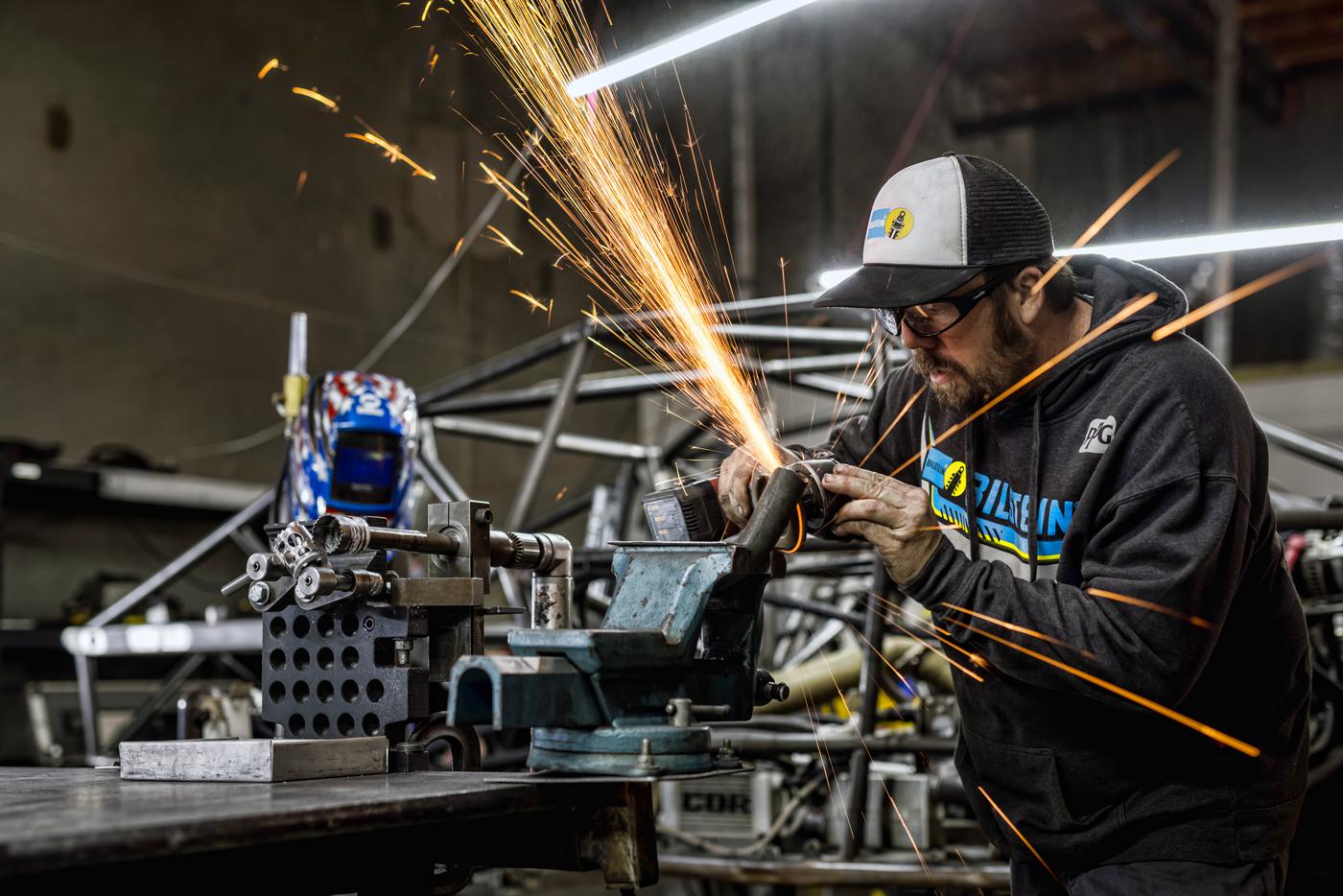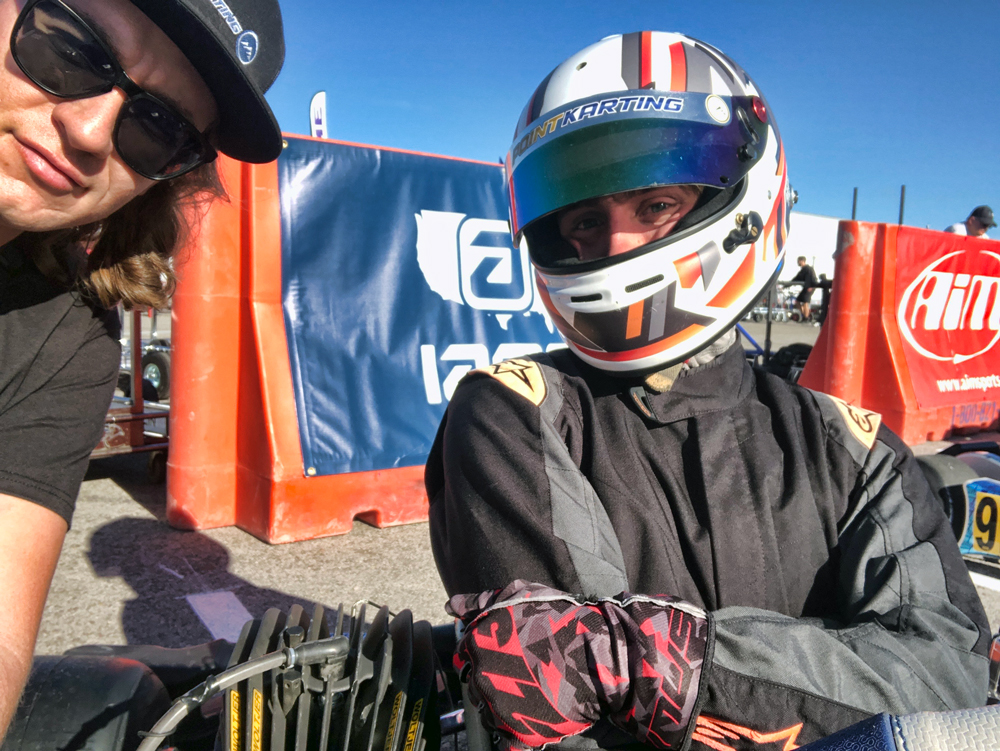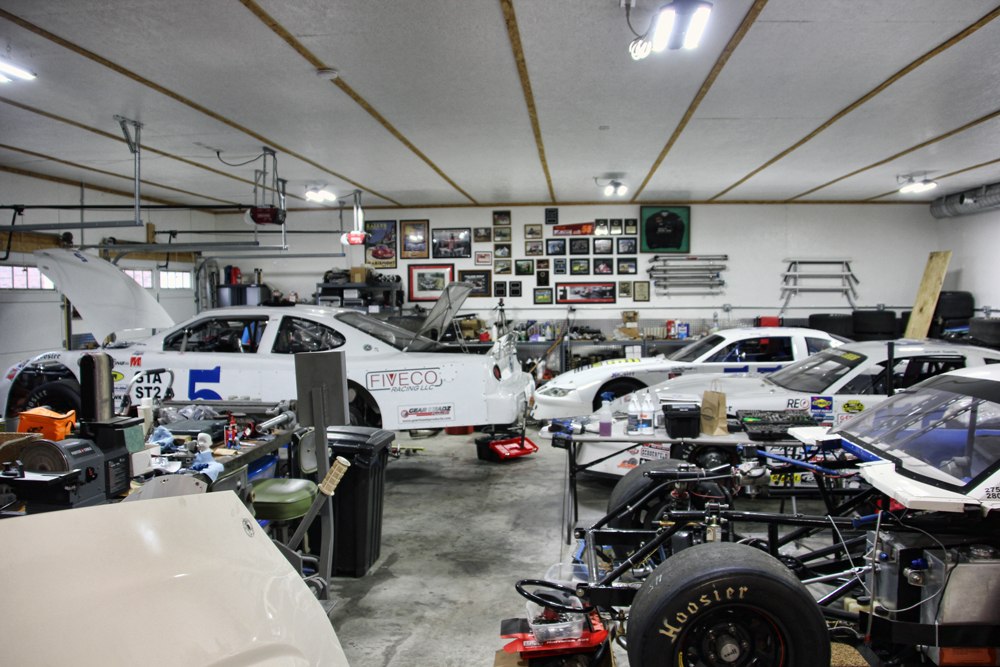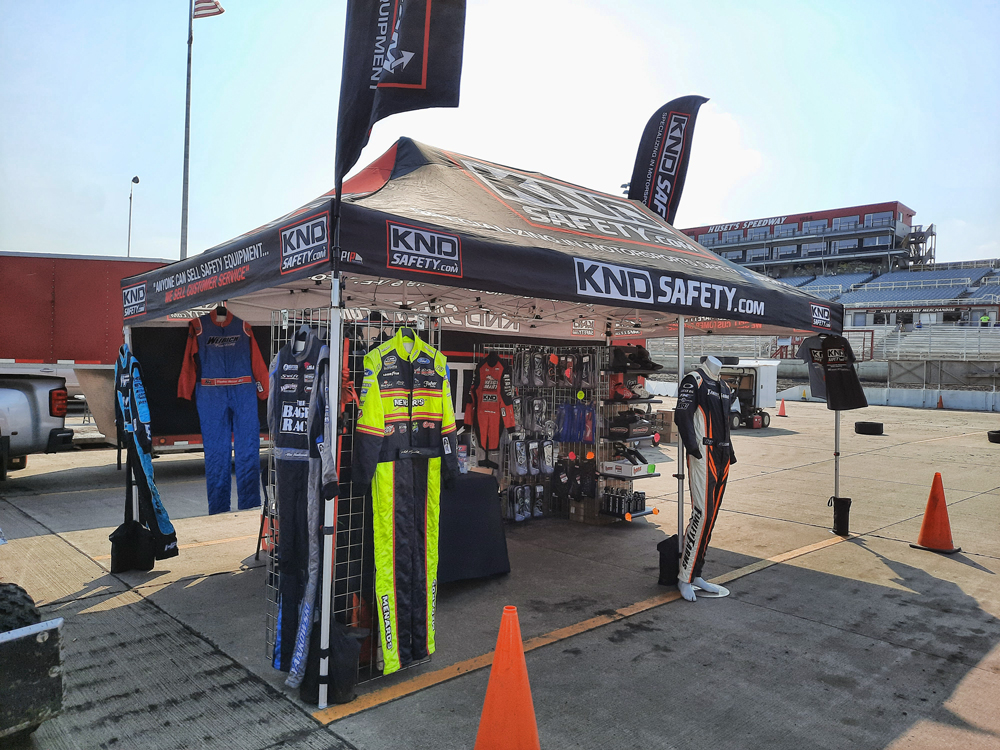Special Report: My Best Business Decision…

Decisive action can deliver big results, and PRI’s annual Motorsports Retail Business Survey uncovered 10 pivotal moves that paid off for these resourceful entrepreneurs.
There has been plenty of talk about the turmoil visited upon the racing industry these last couple of years as pandemic-related shutdowns around the world left race cars in the garage, grandstands empty, and supply chains crippled.
But the thing about hard times is, they present opportunities.
Setting aside the outside influences that interrupted the normal racing calendar, every enterprise goes through cycles of growth when a decision to take the plunge in a new direction can yield big benefits.
In other words, the news isn’t all bad.

As part of PRI’s annual Motorsports Retail Business Survey, conducted late last year, we wanted to examine more positive aspects of the business environment. So, we reached out to speed shops, engine builders, fabricators, machinists, prep shops, tuners, and others, and among our questions was: What is the best business decision you made over the last 12 months?
In this month’s Special Report we’re sharing some of the best responses from these retailers, in their own words, in order to better understand why they did what they did, how long it took to implement, what specific steps were required, and why their actions turned out to be a great decision. In our conversations with these companies, we encountered decisions that touched on almost all aspects of business, including employee relations, time management, inventory control, adoption of technology, travel, and more. The motorsports industry has had to deal with its share of storms these last two seasons, but there were still rays of sunshine breaking through, as you’ll discover in the following pages.
Decision #1: hirE MORE employees and REstructure work HOURS
Eric Gunderson
Point Karting
I made an intentional choice to scale up our workforce at Point Karting and structure my hours more strictly. I focused on putting people in place to start doing parts of my job that I could no longer do if we wished to continue to grow. I also made a decision to attempt to leave work more at work, and “be okay” with walking away at 5 o’clock to return the next day ready to dive in again. We could not continue on as we were, with me doing everything as a single-person business. Instead, investing in people and putting them in a place where they can be empowered to handle some of the workload and specialize in sections of the business was a clear path forward for us in 2021 and 2022.

I started with several employees working on weekends for at-track events, then brought some into the shop for more regular work, scaling part-time help to essentially a full-time role. This helped me identify where help was most needed and start to put systems in place to make things more efficient and actionable. I also took this time to hire a bookkeeper to give me a more comprehensive understanding of my business and what we could afford to take on. This decision turned out to be the best choice because it has allowed me to take Point Karting from a regional kart shop to a nationwide retailer in the online realm. I am able to continue to focus on areas of growth for our business while also maintaining the same level of service within our region that helped us get to this point. The result is that we are more profitable, process our orders in a more efficient manner, and are able to get more done for more customers within the same time frame.
Decision #2: build new imca stock car to help expand customer base
Edward Bertram
K&E Sales
You go to the race track as a vendor, and there’s 150 cars at the track, but you’re only selling to 15 or 20 of them regularly. Where are the rest of them going? It dawned on me that I needed to pick a class that I was uncomfortable with, that I didn’t know enough about. So I picked stock cars. They always have a good field, and they always have good competitors. Now I had to literally put a car together in order to understand what they’re doing. Once I understood the car after I put one together, it was a lot easier to start putting parts in place so that when I did have the ability to sell to one of the stock car guys, I knew what was going on the cars.
At the race track they could talk to my driver, Kyle Frederick, about what works for him. For instance, everybody runs aluminum radiators. I decided to put plastic ones in because I could buy them really right and make a good profit on them, and they work great. So we put plastic radiators in our car, and consequently, I stock a half-dozen or more plastic radiators. I’m getting customers to come to the store to not only look at the car, they see what we’re doing because of the driver I put in it, a very well-liked driver. He shares information with them. So it worked out quite well.
Decision #3: limit quantity of work we take in so quality doesn’t suffer
Win Smith
Win Smith Racing Ent.
We were involved in leasing race cars and rent-a-rides for various people. When COVID-19 hit, some things changed, and we just felt like we needed to pull things back a bit and limit how involved we were with that. We were going to change the model of how we did it.
The year before we made the change, we had seven different drivers in our cars. It got overwhelming in some respects getting used to what each person wanted to experience when they got a car. We were in it in both oval and road course stock cars—we were renting to two different groups of people. Also, the insurance companies started to make changes in how they did liability for people who were in businesses like this. Basically, if you used or said you were renting a ride to somebody, it made it difficult to get liability insurance, even for my shop.
So we took a couple of guys that had worked with us before and said, “Would you be interested in contracting with us for an entire year, and we would concentrate on just the races you want to do?” And that’s what we did. It’s worked out real well.
What they do when they sign a contract for us, they become literally a part-owner of the car. It is its own little corporation. It has relieved so much pressure for us. Our income has actually risen because we’re not having to make so many changes, have so many different people at the track.
What we do now, we set a schedule for the entire year and stick with it so it’s easier to plan. Instead of somebody calling up two weeks before a race and saying, “I’d like to rent a car for this event,” we’re not scrambling to get stuff ready to go.

Decision #4: expand our online store
Kerry Kissinger
Ken’s Kustom Chassis
We have a lot of distributors that we use to sell parts. But the hardest part was integrating the inventory with the online store. It was a lot of manual work. We had 150 different brands with something like 200,000 SKU numbers. It was a daunting task, and it just was holding me back to only putting maybe 20 or 30 of the most popular items in our store. But then we came across Data Here-to-There at the PRI Show. They call it an app, but it works with BigCommerce and Shopify and some of the popular e-commerce platforms. They hook you directly with the major warehouses. As inventory levels changed in the warehouses, they would now automatically change on your website. It made the decision to put a large-scale e-commerce sale together much easier.
They started out working with Turn 14 Distribution, and we were one of their beta testers for Meyer Distributing and Transamerican. They’re like a data network where they connect you with the data. You can see every brand that a particular warehouse has. Just with the click of a button you put a checkmark next to the brand that you want to sell, and then it automatically loads it up onto your website. They have different pricing strategies, too. It really helps us little guys. We were probably selling $3,000 to $4,000 a month online in parts, which isn’t much. Now, in a year’s time, we’re selling $10,000 to $15,000 a week, some weeks we’re doing $20,000 in parts sales. We’re expanding our market, too, from drag racing into diesel performance.
Decision #5: bring manufacturing in-house to eliminate the middleman
Wade McGowan
Race Parts Solutions
Ever since we started, we had some machine shop guys who were friends of ours make our product line. As the business grew, we needed more help, so we invested in some CNC machines and started making our product line here in-house.
During the pandemic, with material supplies and the middlemen, there are so many hands that have to touch everything before a product actually gets produced and sold. We wanted to eliminate that for, number one, quality control. And number two, if something did happen to where we run out, or there are back orders, we’re not relying on other people and their excuses. We decided to take the step and expand and bring more manufacturing and more parts produced in-house.
We actually bought out a machine shop from a guy who was retiring and closing. We pretty much make everything now all our own. We do a lot of fuel system stuff, and we’re real big in the forced induction world—ProCharger stuff, various turbo flanges, turbo kit parts, custom exhaust stuff. Now, we’re starting to expand more as far as production of that stuff goes, like billet intake parts, billet merges for turbo inlets and outlets. We’re coming out with new products almost weekly.
Bringing more equipment in-house meant more employees. We went from two guys on the machine shop side to five guys now. Sales did increase, but the biggest thing was our profit margins because we eliminated middlemen, we eliminated markups. We’re making more off of our product. Plus, we can control it better. No matter what, when you outsource stuff like that, there’s always some tolerances or variances. Now, doing it in-house, we can watch that closer and control it better. And made in America, that’s a big thing for us.
Decision #6: travel to events in new areas during slower months
Kevin Nouse
KNDsafety.com/Kevin Nouse Designs
I sell racing safety equipment. Specifically, custom racing suits is the biggest part of my business. Slow times are typically June through September, when we’re sitting around waiting for the phone to ring. We decided last year we were going to do a little bit of traveling and promote our custom suits and also our website.
I go to a lot of trade shows starting in November all the way through March. We do seven or eight trade shows or racing events and car shows, but I never tried traveling during the summer months. We took about a three-week trip.
I sponsor a race track and two racing series in the Midwest. We went to seven or eight events in those three weeks. We went to the race tracks, and we set up in the pit area with the racers. We met the drivers and the teams, and it was a wonderful trip. We took measurements while we were out there if someone wanted to get measured for a custom suit.
The results weren’t apparent when we went, because that time of year most people have their equipment. But starting into the offseason, when it is custom suit-buying season, we sold many custom suits and all kinds of safety equipment to people that we met out there. It’s still paying off. I get phone calls pretty consistently every week from someone who met us or saw us out there. They have done a phenomenal job of supporting us as a result of the trip.
It was kind of scary because it was a lot of money. To go for three weeks is a lot of travel, fuel, meals, and hotels. But it has paid off big-time, and we are planning to do that same trip again this year, and some different areas, too.

Decision #7: diversify into other types of motorsports
Jason Franikowski
SV Motori
Historically we’ve been involved in the motorsport community here in Colorado. We deal mostly with the folks who like to go to our three main tracks, mostly the club sports, and that was pretty much our focus at that time. We were looking at our customer base and looking at what venues they were running and trying to see how we could diversify and have more visibility.
We started doing some networking through the local BMW car club chapter. We told them, “We can be here and provide these services for your group.” That, in turn, helped us get more stage time with the folks who were teaching those individuals for their first time on the track with the BMW clubs. And these individuals turned out to be involved with other organizations outside the state.
That’s when we started meeting people who had involvement with IMSA. It was through that networking that we began supplying products for IMSA teams. That really helped us with sales and getting more knowledge in both directions from those team players.
It was kind of surprising to find out that some of the folks involved with IMSA are also involved with other teams. The connections broke out from there. Chassis builders started to get involved. And the next thing you know, we’re starting to get involved with some dirt track individuals. It really is amazing what word-of-mouth relations can do in areas you never thought would have an impact on you. Getting involved in some of the professional series and then additional amateur series really woke everything up.
Decision #8: focus more on service/labor and less on parts sales
Jim Helbing
Motorvations Motorsports
The last two years have been my best in the 25 years of performance-tuning Hondas and Acuras. I estimate a 6–7% increase, and perhaps more importantly, I now only do the installs I want to do. I have jobs booked out for months.
I attribute the improvement to my decision to stop stocking major performance parts for inventory. Instead, I offer customers a choice to supply their own parts or have me order only what is needed for a particular job.
Many choose to have me handle the whole project, including ordering parts, and they pay a package price. Those who bring their own parts pay my hourly labor rate. I keep certain parts in inventory for customers who might not have thought to source certain ancillary items for their projects.
My trick is to have only A-mover parts, not stuff that sits. So, I don’t get into a price-matching mess on parts. Profit margins are up, stress is down, and inventory is trim.
Decision #9: build a new chassis jig
David Macan
Custom Fab Works
Business has been very good for me lately. As a fabricator, with a partner of 35 years, I had been handling street-and-strip chassis builds with one jig. That was causing a bottleneck, as we had to spend time converting the jig from handling sheet steel or rectangular-type tubing for street cars to round tubing for drag cars.
Increasing demand for no-prep car builds spurred my decision to finally build a separate jig for drag cars. I spent about four days on and off last summer doing that and put it into service in September. The table, which is over 15 feet long, is flat within ten thousandths of an inch, giving incredible tolerance control for higher-precision builds.
The net result has been getting more cars built. The first three drag cars built on the new jig have been successful from the start. In February, we were working on the fifth car, a 1941 Willys Pro Gas car. We had a 1967 Pro Touring Camaro on the street car jig, and seven more jobs were waiting to start.
Decision #10: expand our social media presence
Andrew Jackson
LSX Swap Solutions
In early 2021, I decided to expand my shop’s social media presence as a tool to increase business. It turned out to be one of my best business decisions. Using my phone, I record and post car-related content on Instagram and Facebook.
I post mostly our builds and the process from start to finish. Those videos get the most views. With 6,500 followers on Instagram, that platform has been my best for growth. My content gets shared often, including by YouTube celebrities.
I started posting four to eight times per day on social media to get noticed beyond my northern New Jersey base. Now, customers are contacting me from North Carolina, Georgia, and even Europe.
My social media efforts have paid off. Pre-pandemic in 2019, I may have done seven major builds. Most of my business in 2021 came through social media, and I did 22 to 25 Pontiac G8 GTs alone. We’ve quadrupled our workload, and I’m scheduled three months out.
Chris Morris
Morris’ Mopars
I didn’t set out to become a social media star, least of all on TikTok, which was mostly dance videos. I was already on Facebook and Instagram, and my young son got me started on TikTok in 2021. There weren’t any TikTokers out there covering cars and what I was doing, so I saw that as a good opportunity. It really took off. It has been a benefit to my business.
I post my smartphone videos every few days. Many are 15 seconds or less. A video of me explaining why I started my Mopar-exclusive shop got 37,000 views in just two days.
As a result of the videos, I’ve received customer inquiries for parts, and I work on cars directly through TikTok messaging. People recognize me at the larger Mopar events and at trade shows. I handle social media myself. I credit the concentrated efforts with growing the business.
I was mainly a one-man shop before, but I’ve added two part-time helpers since, and will be going to two full-time staff members by summer.
Sources
Custom Fab Works K&E Sales and Service
kandesales.net
Ken’s Kustom Chassis
kenskustomchassis.com
KNDsafety.com & Kevin Nouse Designs
kndsafety.com
LSX Swap Solutions
facebook.com/lsxswapsolutionsllc/
Morris’ Mopars
morrismopars.com
Motorvations Motorsports Point Karting
pointkarting.com
Race Part Solutions
racepartsolutions.com
SV Motori
svmotori.com
Win Smith Racing Ent.
facebook.com/winsmithracing
 MEMBERSHIP LOGIN
MEMBERSHIP LOGIN JOIN PRI
JOIN PRI


